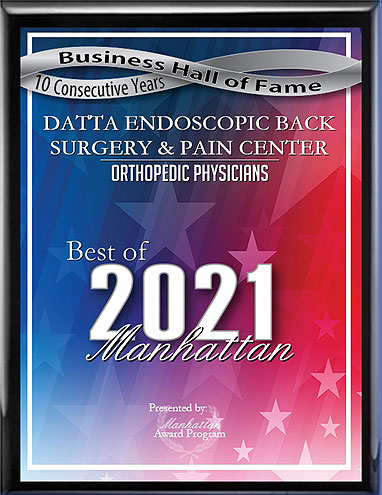If you suffer from a spine condition, seeing a spine doctor is essential for your health and quality of life. Some patients worry that seeing a spine doctor will be too expensive. Fortunately, with the help of insurance and financing, the majority of patients are able to afford the treatment they need.
Types of Spine Treatment
A wide range of conditions can affect the spine, and the right treatment for a given case will depend on the cause of the condition, its severity, and how the patient has responded to past treatments. In general, physicians prefer to start with the least invasive treatment likely to be effective. For certain conditions, including severe or progressive conditions, surgery might be the first choice of treatment.
Only your spine doctor can determine the right course of treatment for your spine condition. Treatments for spine conditions include:
- Non-steroidal anti-inflammatory drugs (NSAIDs) - Drugs like naproxen and aspirin can be used to reduce inflammation and relieve symptoms. You shouldn't take NSAIDs on an extended basis without first discussing it with your physician.
- Physical therapy - Physical therapy can align the spine, strengthen the muscles that support the spine, and relieve inflammation. Physical therapy often forms a cornerstone of treatment, no matter what other methods are used.
- Chiropractic treatment - Chiropractic care, when used in conjunction with medical treatment, can relieve symptoms, align the spine, and reduce inflammation.
- Epidural steroid injections - Steroids have powerful anti-inflammatory effects. Steroid injections administered to the epidural space in the spine can dramatically reduce inflammation, with effects far more powerful than could be achieved with oral medication.
- Stem cell therapy - Stem cell therapy is a cutting-edge treatment used for disc problems and some other spine disorders. During this treatment, stem cells are collected from one part of the patient's body and then injected into the affected part of the spine. This has dramatic, long-lasting anti-inflammatory effects.
- Laser spine surgery - During laser spine surgery, a camera and a laser are used to operate on the spine through tiny incisions about the size of a needle. This approach has several advantages over traditional spine surgery, including a shorter recovery time and lower risk of side effects.
- Nerve stimulation - Nerve stimulation relieves pain by interrupting the transmission of pain signals with electrical stimulation. Leads are placed near the affected part of the spine, and the stimulator is implanted in the torso. The nerve stimulation is applied several times a day.
- Open spine surgery - Open spine surgery is the most traditional and invasive form of spine surgery. During this procedure, a large incision is made along the spine in order to access it. It's often necessary to remove bone or fuse two or more vertebrae together.
Factors Affecting Cost
The cost of treatment can vary considerably based on the type of treatment used. Conservative methods tend to be the least costly, while open spine surgery, which requires a hospital stay, is associated with the highest costs. Minimally invasive methods like laser spine surgery tend to be expensive, but less so that open spine surgery.
Your insurance coverage is the biggest factor affecting the out-of-pocket cost for spine treatment. Some insurance plans have a large copay and deductible, while others have no copay at all. If you're uncertain about your insurance coverage, contact your insurance provider for details. Your spine doctor may also contact your insurance company on your behalf.
Managing Costs
In some cases, it is not possible for patients to afford their portion of the cost of treatment out of pocket. If this is the case, financing can be used to help spread the cost over several payments. Credit cards, health care credit cards, loans, lines of credit, and third-party financing companies are all possibilities for managing treatment. The right financing option for you will depend on the resources available to you, your credit score, and your personal preferences.
Although there may be a significant cost associated with getting treatment from a spine doctor, it's important to compare that cost to the long-term costs of not getting treatment. Untreated spine conditions can cost a lot in lost work productivity and future health care costs, to say nothing of reduced quality of life. In addition, spine conditions can worsen over time if not treated. Considering this, the cost of treatment is often much less than the costs of not getting treatment, making spine treatment a great investment.
Dr. Sukdeb Datta of the Datta Endoscopic Back Surgery and Pain Center works to keep treatment as affordable as possible for patients. Dr. Datta accepts most major insurance plans, including Aetna and Cigna. To schedule your consultation today, please click below and enter your information or call Dr. Datta at (212) 430-0312.






 EDISCSCULPT
EDISCSCULPT



